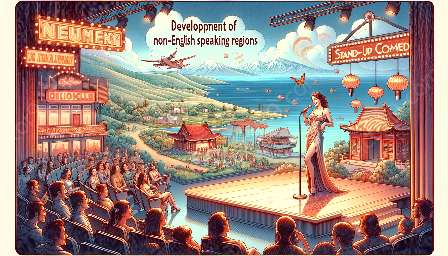Stand-up comedy has always been a reflection of the cultural, social, and historical fabric of society. It serves as a platform for comedians to address and interpret cross-cultural differences in a humorous light.
Introduction to Stand-up Comedy
Stand-up comedy as an art form has a rich history, with roots dating back to ancient times when jesters and storytellers entertained audiences. While the foundation of stand-up comedy may have been laid throughout history, its evolution in different cultures and societies has been shaped by historical events, social norms, and cross-cultural interactions.
Historical Influences
Colonization and Globalization
Colonization and globalization have significantly impacted cross-cultural stand-up comedy. The encounters between different cultures and the power dynamics that emerged from colonization, as well as the interconnectedness facilitated by globalization, have led to a fusion of comedic styles and perspectives. This has influenced the cross-cultural exchange of humor and the emergence of comedians who navigate the complexities of multiple cultural identities.
Cultural Movements and Social Change
The social and cultural movements of the past, such as the civil rights movement, women's liberation, LGBTQ+ rights, and anti-racism efforts, have played a pivotal role in shaping cross-cultural stand-up comedy. Comedians have used their platform to address these societal changes, challenge stereotypes, and advocate for equality, thereby influencing cross-cultural understanding and solidarity through humor.
Technological Advancements
The rise of the internet and social media platforms has revolutionized the dissemination of stand-up comedy across cultures. Comedians can now reach global audiences, leading to greater cross-cultural exchange and the adaptation of comedic content to resonate with diverse viewers. Additionally, digital platforms have provided an avenue for cross-cultural comedians to collaborate and introduce their unique comedic perspectives to new audiences.
Cross-Cultural Differences in Stand-up Comedy
Cultural Context and Norms
Cultural taboos, humor styles, and societal norms vary across different cultures, influencing the themes and comedic approaches adopted by stand-up comedians. Understanding these differences is crucial in creating comedy that resonates with diverse audiences while respecting their cultural sensitivities.
Language and Translation
The nuances of language and translation present both challenges and opportunities for cross-cultural stand-up comedy. Comedians must navigate linguistic barriers while ensuring that their humor translates effectively across cultures, often requiring adaptation and creativity in delivering punchlines and wordplay.
Identity and Representation
Stand-up comedy serves as a platform for diverse voices to express their unique cultural experiences and identities. Comedians often draw on their backgrounds and heritage to highlight cross-cultural differences, challenge stereotypes, and celebrate the richness of cultural diversity through comedic storytelling.
Stand-up comedy continues to evolve as a dynamic art form that reflects the historical and cross-cultural influences of our world. By embracing diversity and understanding the historical context of cross-cultural interactions, comedians can create comedy that transcends cultural boundaries, fosters empathy, and brings laughter to audiences around the globe.
























